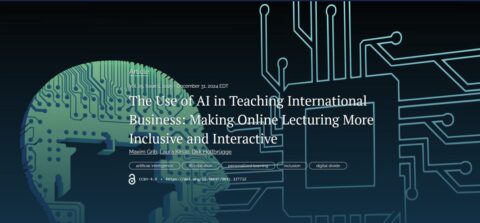AI has the potential to transform higher education by offering personalized learning experiences tailored to individual student needs. Classes often consist of a diverse group of students with different cultural and linguistic backgrounds and with different communication and learning styles. This can manifest into learning difficulties due to language barriers or divergent learning preferences.
AI tools, such as automatic voice and text translation, voice-overs in different languages, context interlinking, and collaborative learning tools, adapt learning content to the students’ pre-existing knowledge level, address individual knowledge gaps, and make the learning experience more engaging.
In an article recently published in AIB Insights, Maxim Grib, Dr. Laura Kirste and Professor Dr. Dirk Holtbrügge describe the use of AI in one of our international management courses. The AI tool applied in our course was developed in close partnership with the Silicon Valley-based startup Copal.ai. The AI tool uses the most recent technological developments in Natural Language Processing (NLP) to address the language and accessibility barriers that often hinder learning in a diverse student group. The AI-enhanced video materials are accompanied by auto-generated transcripts and voiceovers in over 36 languages, ensuring inclusivity and equal learning opportunities for all students, regardless of their linguistic background or hearing abilities. The NLP automatically identifies the relevant theories, concepts, names, and abbreviations and links them with the knowledge database, selected knowledge clips, and lecture material provided.
The AI-enhanced lectures are also equipped with a content searchability feature, allowing students to search for keywords mentioned in the transcript or shown in the video with precise time stamps. This functionality transforms the typically linear progression of video lectures into a non-linear, more focused learning experience. The innovative use of AI not only enhances the educational content but also promotes inclusivity and equal learning opportunities, ensuring that all students, irrespective of their linguistic or socio-economic backgrounds, can access and engage with the course material effectively.
The study has been published in AIB Insights and can be accessed here.

